Each wine bottle at Owen Roe Winery tells a story. It may be about deciding on the location of the estate vineyard, sharing lunch at an Irish abbey, or painstakingly cutting out letters from old documents to put together Owen Roe’s signature. But each label has a connection with the wine inside.
Here are a few of the stories behind the wine labels.
Owen Roe’s Signature: Made from Union Gap Estate grapes or grapes from Red Willow or DuBrul Vineyard, these are considered the winery’s signature wines. The label features the signature of Owen Roe O’Neill, the famous Irish patriot the winery is named after.
A letter written in 1649 by O’Neill was found in David O’Reilly’s family castle (O’Reilly is co-owner and winemaker at Owen Roe Winery), but because the letter was written in Spanish, O’Neill penned the signature with his Spanish name. David cut out the letters from the document to create Owen O’Neill’s signature. O’Reilly is related to O’Neill through marriage.
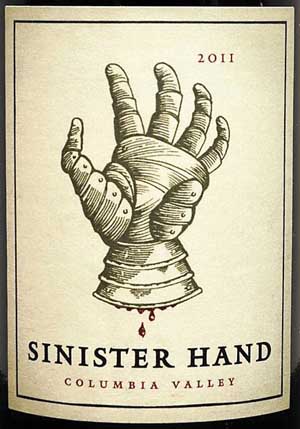
The Sinister Hand wine label tells of the severed left hand, a story that’s been in David O’Reilly’s family for centuries. (Melissa Hansen/Good Fruit Grower)
Sinister Hand: The sinister hand label, used for a red blend, tells of the severed left hand, a story that’s has been in O’Reilly’s family for centuries. The left hand is found on the O’Reilly and O’Neill family crests. A feud between the two families regarding land was settled by a rowing competition that ended with a hand cut off and thrown ashore, enabling the one-handed rower to reach land first.
Abbey of Clonmacnois: This wood-print label on Pinot Noir wines depicts the classic Irish image of the Abbey of Clonmacnois. The 1,500-year-old stone ruins include a cathedral, churches, two round towers, and the famous Celtic “Cross of the Scriptures.”
Yakama Nation: An 1880s photograph from the Yakima Valley Museum shows the Yakama Indian Nation overwintering in teepees on the banks of the Yakima River near Union Gap. O’Reilly uses the photo on Cabernet Sauvignon wine to tell of the Union Gap vineyard’s warm microclimate that is typically five to seven degrees warmer than other Yakima Valley locations.
Ex Umbris: A throwback to O’Reilly’s Latin studies, the expression Ex Umbris et Imaginibus in Veritatem (for out of the shadows and images come truths) was originally used to convey a smoky flavor in the wine from a summer wildfire. The wine was so popular that the label was continued and is now used for Syrah, which has a smoky quality.
Abbot’s Table: During crush, the Owen Roe Winery crew shares lunch together just as those who visit abbeys are offered a place to dine with the monks. The Abbot’s Table label for red wine reminds O’Reilly of a visit he made to an abbey during European travels in which he found himself seated on the abbot’s (father’s) table to share a meal and table wine.
Other examples: Another label, on a Cabernet Sauvignon wine, features a picture of Cloughoughter Castle, the O’Reilly family castle, claimed in the 1200s, that was used as a fortress during the 1600s. Sharecropper’s Pinot Noir has a horse-drawn cart on the label to tell of the sharecropping business practice that Owen Roe Winery initially used to purchase fruit. Lady Rosa Syrah has an image of a family cemetery (Lady Rosa was the wife of Owen Roe O’Neill). O’Reilly’s Pinot Noir has an Irish wolfhound on the label.

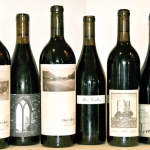
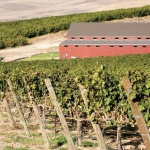

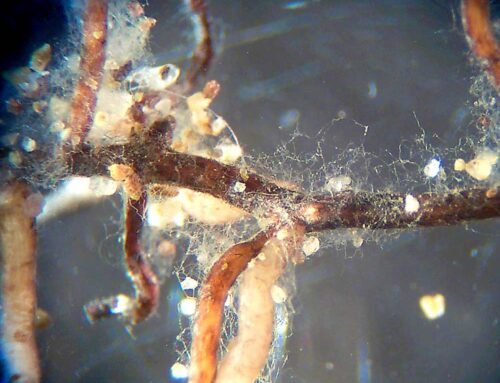
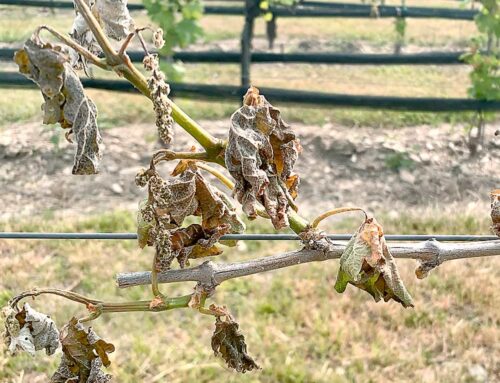

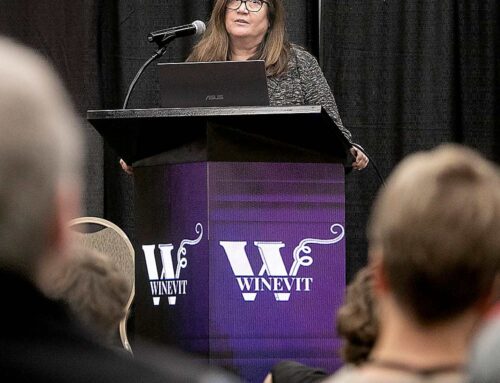
Leave A Comment